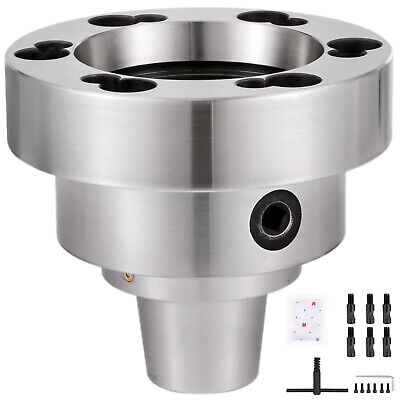Could you please elaborate? I learned the opposite - small radius when taking light cuts to get a better finish for the reason that macardoso illustrated (minimize the ratio of radial to axial forces....did I say that correctly?). But maybe I'm misunderstanding what you wrote. If you meant that a larger nose radius for a better finish when taking large DoC (vs. small DoC): then I get it.
Most manufacturers will measure surface roughness in terms of Ra and Rz, essentially a statistically averaged surface height deviation. In the home shop, we most often shoot for "jewelry" finishes. Here's how they differ.
A CNC lathe will be programmed to make a part in as little time as possible. Running a 10 minute finish pass on a machine means wasted money so the programmer will opt for methods to meet their Ra/Rz requirements (measured on a profilometer). For a given feed rate, a tool with a larger nose radius will produce scallops in the part with a lower height (hence better finish) than a small radius tool. See the highly exaggerated image below, and play with this calculator:
https://www.custompartnet.com/calculator/turning-surface-roughness
Now the same holds true in the home shop with a few notable exceptions:
- Time is not usually nearly as important to us as we don't run production
- We do not spend lots of money on fancy ($$$) inserts to give optimal results on each material
- Our machines (even your 16") are WAY less rigid than a production CNC. Your 16" is much better than my 12" in this category, and mine much better than the guys running 7" lathes, but the CNC lathes outclass us all.
So why does this matter. Well, the logic above drives you to select a tool with a very large nose radius for finishing. But in doing so, you accept very high cutting forces. You end up needing to take a finish pass at 75% or more of the nose radius (that can be a very meaty cut) or if you do less, your radial cutting forces will be very high, deflecting the tool, deflecting the workpiece, ruining your accuracy, and potentially allowing the tool to rub and mar the pretty finish.
If you can get used to taking a 0.050" or more finish pass, then the larger nose radius tools will allow your to finish at a higher feed rate. But if you are after a precision fit and you need to sneak up on the final size, a sharp, small nose radius insert will allow you to take very small depth of cut finish passes, get a very accurate final size, and get a great surface finish, BUT, your finish feed rate will need to be comparatively slow.
Using xxGT style inserts, I've taken 0.0005" depth of cut passes that have come off as one continuous chip. I've also used these inserts to turn bearing diameters within 0.0002" on diameters without needing any sanding or polishing to get the fit right.
So in summary, the large nose radius suggestion is correct, but needs to be applied with an appropriately large depth of cut on the finish pass. Small nose radius tools generate less cutting forces and can take smaller depths of cut, which allows delicate finish passes. Both can give great finishes, but the large nose radius will do it faster.
EDIT: Great pic from Sandvik


